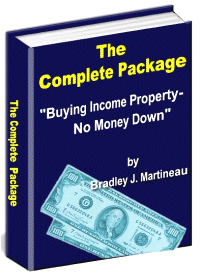You are attracted to a home for more than its number of bedrooms and square footage. Whether consciously or subconsciously, you are drawn to the individual character of a home. Part of what makes up that character is its architecture style.
During various periods of our history, different architectural styles were prevalent with builders. If you were to take a home tour around town, you can get a feel for when different neighborhoods were built based on the architecture of the homes. Today, many new homes incorporate different aspects of these styles on the exterior and interior.
The Queen Anne, Gothic Revival and Empire homes are all variations of the Victorian style. Popularized after the Civil War, these homes were most popular in the South and West. With its intricate shapes, elaborate trimming, and fish-scale shingles, these homes truly reflect the Victorian age. Inside, the homes are finely detailed with stained glass windows, elaborate trim and molding, and side-by-side entry doors. Other common elements are wraparound porches and bay windows.
Greek Revival-style homes were built during 1820-1850. Many of its elements represent the style of Greek Temples with columns, gable or double-sloping roofs, and pediments over windows and doors. The windows are usually square and rectangular with fan windows over the entryways. The interiors are symmetrical as well, with detailed woodwork and baseboards.
Colonial homes take on the simplistic style of the original homes of settlers to the United States. Common to this style are the steep roofs with gable ends, clapboard siding and small windows on the outside and wainscoting and chair rails on the inside. A popular variation of the Colonial-style is the Cape Cod, which is usually 1 ?stories with the front door in the center and two gable (triangular structure) ends.
If you've ever seen a photo of the White House, then you are familiar with the Georgian style home. Built during the period of 1715-1790, the homes were inspired by English pattern books and reflected the wealth of the owner. Inside the home, you could find large, ornate cornices and trim incorporating leaves and shells. The exterior is marked with medium pitched roofs with minimal overhang. The front door is centered with a decorative crown overhead and flanked by flattened columns. There are numerous windows with nine or twelve panes in each.
The Arts and Crafts style, prominent from 1890-1920, was one of the first styles native to America. It originated in Southern California between World War I and II. Some of its features include large porches, exposed stucco or stones, low pitched roofs with large overhang, as well as tall narrow windows grouped together to permit plenty of sunlight. The interiors have open floor plans with built-in cabinets and furniture and natural fireplaces. Similar styles to the Arts and Crafts home include the Tudor, Spanish, Mission, Bungalow and Prairie.
Recognized by its flat roofs, metal casement windows and plain or absent interior molding, the Modern style home is the catch all style for homes built since the 1920s. This home design generally favors function over style. The Ranch home is probably the most popular variation of the Modern style. The Ranch originated in California in the 1930s, and became popular nationwide in the 1950s and '60s when it became a symbol of the post-World War II American Dream. Common design elements for the one-story home are its pitched-roof, wood or brick exterior, and built-in garage that shares the same roofline with the home. It also favored a patio in the rear of the home in lieu of a front porch.
Knowing the style of home you like can be helpful when looking for a new home. The more information you can give your real estate professional, the better they can serve your needs and get you in your dream home.
Neda Dabestani-Ryba is a licensed Realtor in Maryland. She is a member of the President's Circle of Top Real Estate Professionals. She can be reached at (800) 536-3806 or visit her website for more information: http://neda.dabestani.pcragent.com/
Prudential Carruthers REALTORS is an independently owned and operated member of Prudential Real Estate Affiliates, Inc., a Prudential Financial company.
Equal Housing Opportunity

